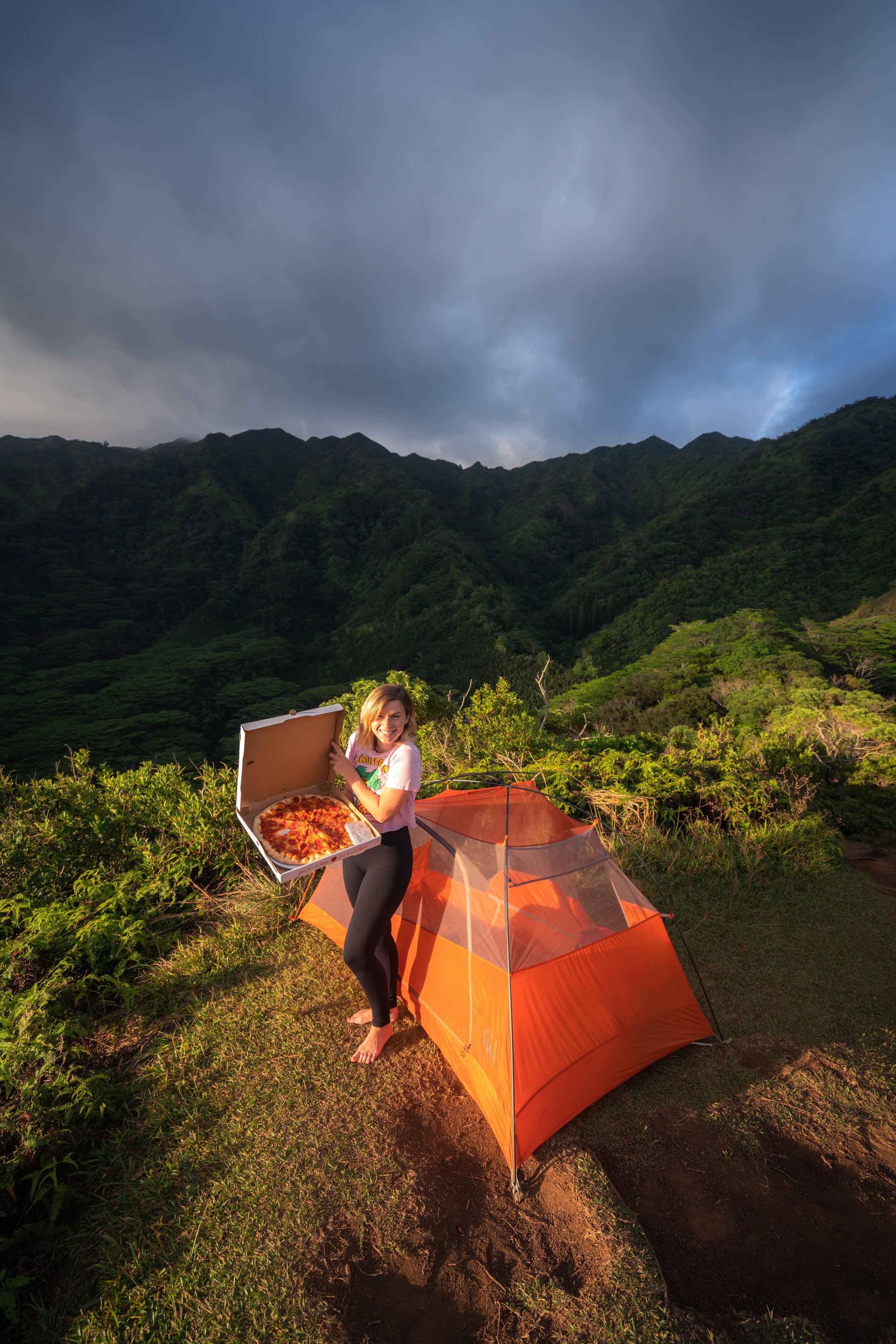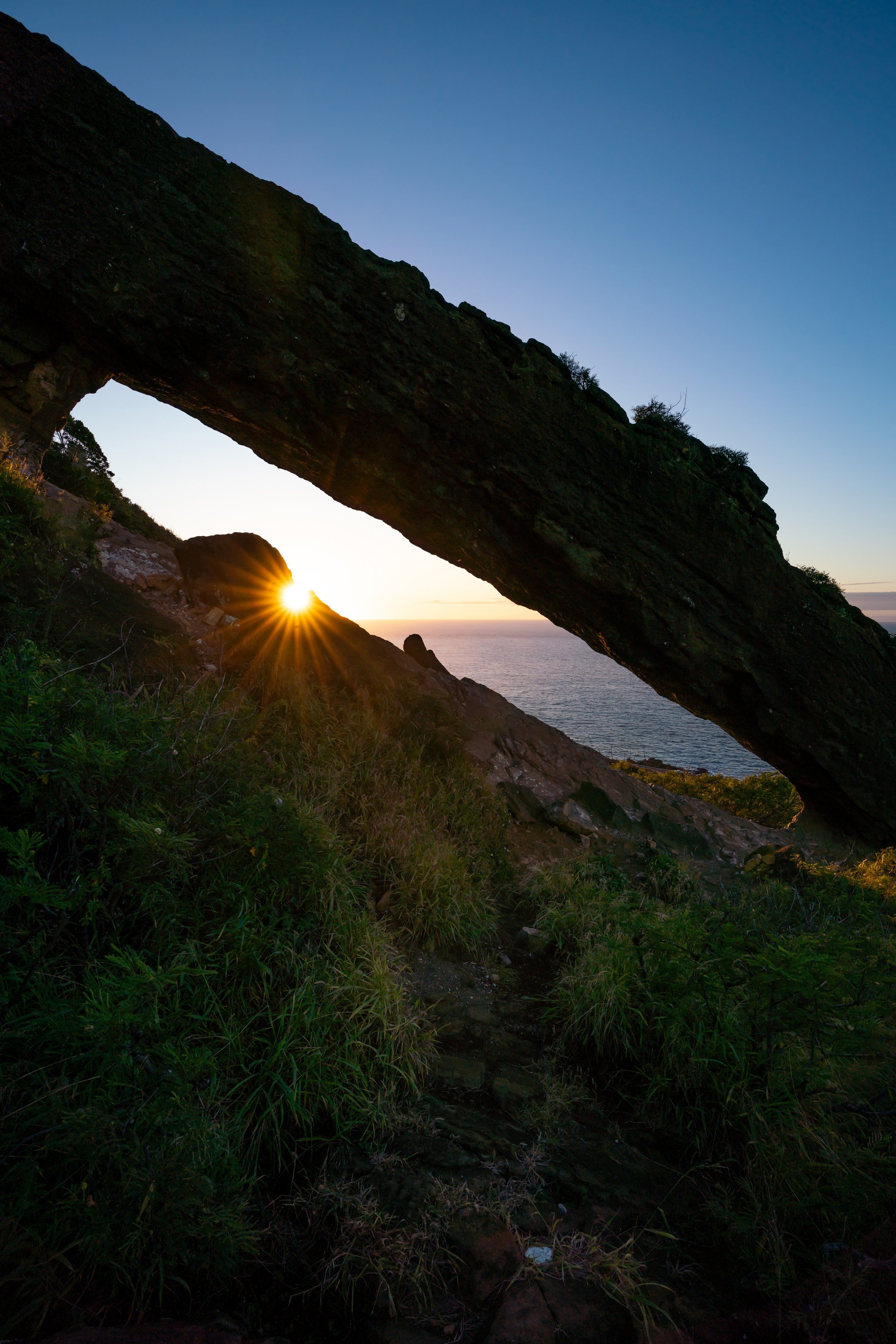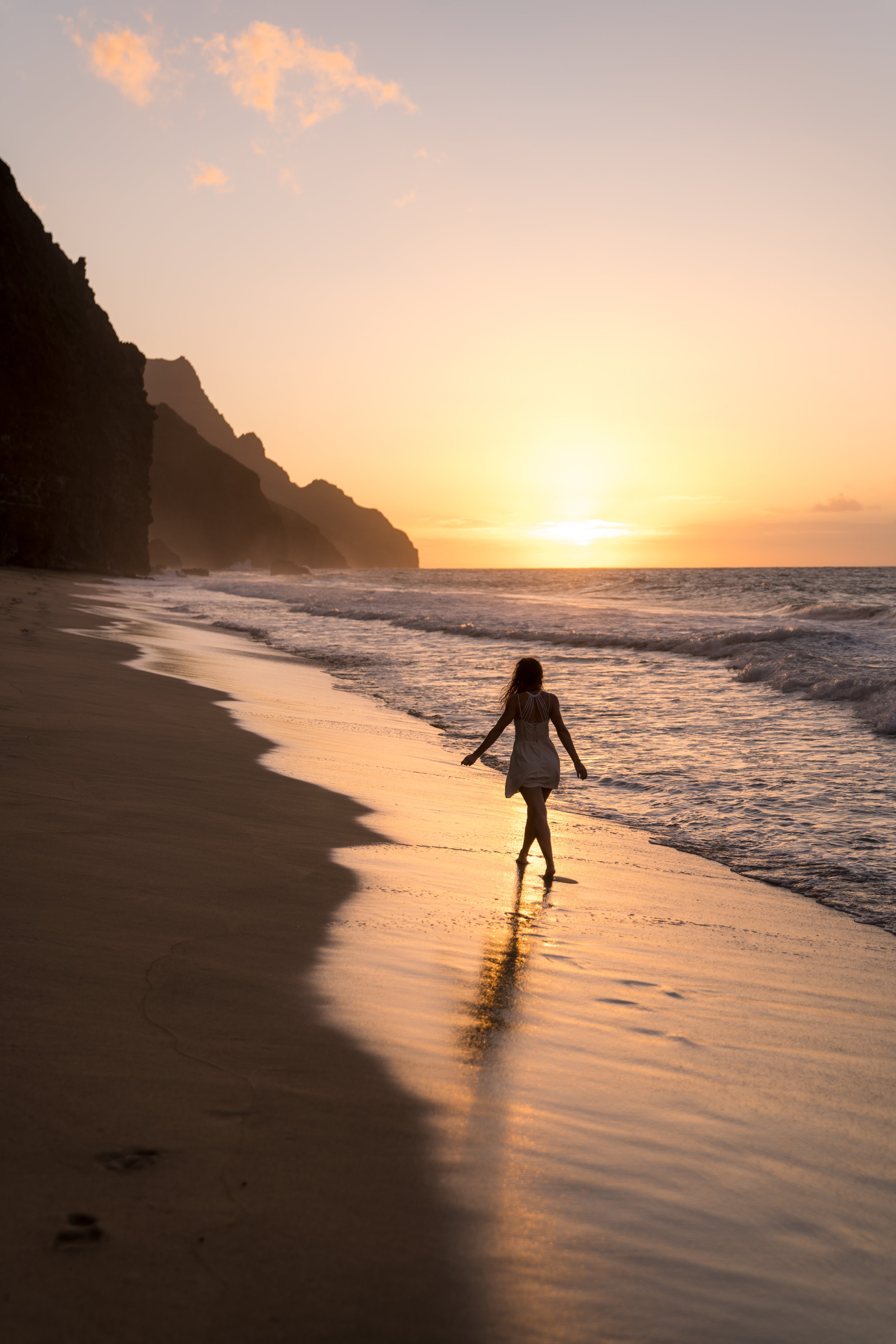Hiking the Puʻu Kōnāhuanui Ridge Trail (Tantalus to K1) on Oʻahu, Hawaiʻi
Distance: 8.2 miles / 13.2 km
The Puʻu Kōnāhuanui Trail is a renowned favorite on Oʻahu, as the 4.1-mile (6.6 km) ridge that begins atop Tantalus leads to the highest summit in the Koʻolau Mountains at 3,150 ft. (960 m), making K1 the third-highest summit on the island!
That said, there’s a saying that Oʻahu hikers use, which is, 'All Tantalus trails lead to K1,' but there are two trailheads that are better routes to begin than others. These are the Puʻu ʻŌhiʻa and Kalāwahine Trails, which I say because either option is easily the most straightforward route to the summit of Puʻu Kōnāhuanui.
In any case, know that just because K1 is the tallest peak in the Koʻolau Mountains, doesn’t mean that it’s the hardest. By comparison, the neighboring Kapālama Ridge to Puʻu Lanihuli is considerably more challenging to reach a shorter summit.
All this to say, there are at least five different routes from all sides of the peak that can be taken to climb Puʻu Kōnāhuanui, but in this post, I chose to begin from one of the two most practical routes on Tantalus: the Puʻu ʻŌhiʻa Trailhead.
Puʻu ʻŌhiʻa Trailhead Parking
Parking for the Puʻu ʻŌhiʻa Trailhead is located directly off Tantalus-Round Top Drive where the road crests at its highest point from either direction before heading back down again.
Out of caution, consider the Puʻu ʻŌhiʻa Trailhead to be a high-crime area for petty theft, meaning you should never leave visible bags or anything valuable in your car.
Google Maps Directions: Puʻu ʻŌhiʻa Trailhead
My Hawaiʻi Hiking Checklist
Osprey 3L Water Bladder - The Osprey 3L water bladder is the most universal hiking and backpacking water bladder on the market, and it’s my go-to because of the slide-off seal that allows it to be quickly filled from the top. Additionally, individual parts are easily replaceable, such as the bite valve.
Blister / Heel Protectors - I swear by these cheap, amazing heel protectors to prevent blisters for nearly every kind of hiking and backpacking that I do!
Black Diamond Headlamp - Personally, I recommend the Black Diamond Storm because it is one of the brightest, lightest, and longest-lasting headlamps on the market—and trust me, the weight-to-battery-life ratio really does matter!
Hiking / Trail Running Shoes - Depending on the type of trail, I prefer to use either the Keen Targhee for longer, more rugged hiking or the HOKA Zinal Trail-Running Shoe for lighter, less intense trails. In either case, both have been amazing to me for many years across countless environments, and both can be found in men’s and women’s sizes. - (Men’s Keen / Women’s Keen) (Men’s HOKA / Women’s HOKA)
Waterproof Rain Shell - You never know when it may rain, and I’ve learned over the years that a rain shell is far better than a rain jacket. By this, I mean that it’s best to have something that the water will roll right off of, which is why I recommend the Patagonia Torrentshell 3L available in both men’s and women’s sizes.
High SPF Sunscreen - Packing high-SPF sunscreen is a must for long days outside!
Hiking the Puʻu Kōnāhuanui Trail
On Tantalus, the general rule of thumb is that all trails lead to K1. However, the most practical routes to Puʻu Kōnāhuanui are either from the Puʻu ʻŌhiʻa or Kalāwahine Trailhead, which both begin within a mile of each other off Tantalus-Round Top Drive.
That being said, you’ll have to decide which sounds like the better option to you. What I mean is that the Puʻu ʻŌhiʻa Trailhead has a better parking area than Kalāwahine, but the trail climbs up and down Puʻu ʻŌhiʻa, which is somewhat annoying—especially on the return hike.
On the contrary, the Kalāwahine Trail is a bit flatter and slightly shorter, but the parking situation can be more challenging, as there are fewer spaces to park off the side of the narrow road.
In any case, the Puʻu ʻŌhiʻa Trail to the Mānoa Cliff Trail junction is 0.8 miles (1.3 km), followed by another 0.5 miles (0.8 km) to get to the junction where Kalāwahine meets up with the Pauoa Flats Trail.
If this sounds confusing, I encourage you to use the map below or check out my separate post to see how all the Tantalus Trails wind together to make this larger network.
Read My Separate Post: Tantalus Loop Trail
Right from the start, the Puʻu ʻŌhiʻa Trail immediately begins climbing.
When you come to this or any other splits off of the main trail, don’t follow them.
The Puʻu ʻŌhiʻa Trail should continually climb uphill until Telephone Road, shown below.
Telephone Road
After just 0.4 miles (0.6 km), the Puʻu ʻŌhiʻa Trail joins with Telephone Road.
Go right to continue toward the Pauoa Flats Bench.
At this point, you should get your first view of Kōnāhuanui before descending back down into the forest.
The next time the peak is visible won’t be until the contour trail a few miles up the trail.
Mānoa Cliff Restoration Area
The next section across Tantalus passes through the Mānoa Cliff Restoration Area.
Essentially, Mānoa Cliff is a heavily-managed restoration site focuses on native species restoration and biodiversity, while keeping non-native ungulates out.
Therefore, please be sure to close the ungulate-exclusion fence after passing through.
Puʻu ʻŌhiʻa-Mānoa Cliff Junction
When the Puʻu ʻŌhiʻa Trail meets up with the Mānoa Cliff Trail, go left to continue toward the Pauoa Flats Bench.
On a different note, this short stretch to the next gate is my favorite stretch of trails on Tantalus because of all of the different native species you can find in such a small area.
Mānoa Cliff-Pauoa Flats Junction
When the Mānoa Cliff Restoration area comes to an end, go straight to begin the Pauoa Flats Trail.
Pauoa Flats is the last trail on Tantalus before continuing further up the true Puʻu Kōnāhuanui Ridge Trail.
Pauoa Flats-Kalāwahine Junction
This is the exact trail junction where the alternative Kalāwahine Trail meets up with Pauoa Flats, essentially cutting out everything mentioned above on this separate access trail.
Go straight (right) to continue to the Pauoa Flats Bench.
Pauoa Flats-Nuʻuanu Junction
Next, the Pauoa Flats Trail will pass by the Nuʻuanu Trail, which is more or less a connector trail down to Nuʻuanu Valley and the Judd Trail.
Continue straight (right) to remain on the Pauoa Flats Trail.
Read My Separate Posts: Nuʻuanu Trail / Judd Trail
Pauoa Flats-ʻAihualama Junction
Shortly after the Nuʻuanu junction, the Pauoa Flats Trail will again pass by another connector trail, known as the ʻAihualama Trail.
Essentially, ʻAihualama connects the very end of the Mānoa Falls Trail with Tantalus by way of the ʻAihualama Trail.
Read My Separate Posts: ʻAihualama Trail / Mānoa Falls Trail
Pauoa Flats Bench
The Pauoa Flats Bench is the end of the maintained trails on Tantalus.
From here, Puʻu Kōnāhuanui Trail continues straight past the bench, which is where the trail will noticeably become less traveled.
That being said, I recommend hiking pants for the remaining sections, as the overgrowth will only become worse and worse the further you hike from Tantalus.
The pants below are my recommendations that hold up the best with the overgrowth here in Hawaiʻi, but with any hiking pants that need to be durable, make sure that they are at or near 100% nylon. This is really the most important factor!
Puʻu Kōnāhuanui Ridge-Contour Junction
After just 0.25 miles (0.4 km) from the Pauoa Flats Bench, the Puʻu Kōnāhuanui Ridge Trail comes to a bit of a vague trail junction.
In short, there’s a ridge trail that continues straight and follows the crest of the ridgeline, and a contour trail that makes this hard switchback. However, both trails lead to the same place further up the mountain.
That being said, I almost exclusively take the contour trail because it’s much easier.
By this, I mean that there’s no unnecessary up and down on the contour trail as opposed to the ridge trail. The contour trail only gains about 300 ft. (91 m) over the course of 0.9 miles (1.4 km) to get to the same exact spot as the ridge trail, which does much more unnecessary climbing and descending to reach the same spot.
Upper Puʻu Kōnāhuanui Ridge-Contour Junction
This is where the contour trail and the ridge trail come back together for the rest of the hike to Kōnāhuanui.
Over the next 0.8 miles (1.3 km), the Puʻu Kōnāhuanui Trail gains about 1,000 ft. (305 m) to the summit of K2—the lower of the two summits—by about 100 ft. (30.5 m).
If you look closely, you can see one of Hawaiʻi’s endemic Damselflies.
Puʻu Kōnāhuanui II (K2)
The photo below is the summit of K2, and just prior to this point, the Koʻolau Summit Trail (KST) meets up with the Puʻu Kōnāhuanui Trail from the ridgeline across Mānoa.
From K2 to K1, the there’s only about 0.4 miles (0.6 km) along the KST to reach K1, the higher of both summits on Kōnāhuanui. However, the one annoying part is that the ridgeline drops about 100 ft. (30.5 km) off of K2 to cross over to K1.
This is one of my favorite photos I’ve ever taken anywhere across the summit trail!
Puʻu Kōnāhuanui (K1)
After the short 0.4 miles (0.6 km) traverse from K2, the Puʻu Kōnāhuanui Trail ends at the 3,150 ft. (960 m) peak—the highest summit in the Koʻolau Mountains.
On a clear day, you can see expansive views in all directions, including the Waiʻanae Mountains and Mt. Kaʻala to the west, Puʻu Lanihuli to the north, Mt. Olomana to the east, and other notable hikes, like Waʻahila Ridge to the south.
Furthermore, many in the hiking community are aware that the trail doesn’t necessary end at the summit of Puʻu Kōnāhuanui, but I caution against proceeding in any direction off the summit, other than the same ridge trail to get here.
I say this because all hikes, including Lulumahu Ridge to Lulumahu Falls, the KST to the Pali Notches, Piliwale, and the KST across Mānoa are all significantly more difficult and more dangerous.
Read My Separate Post: Koʻolau Summit Trail (KST)
Native Plants on the Kōnāhuanui Trail
Being that Puʻu Kōnāhuanui is the highest peak in the Koʻolau Mountains, the entire trail has a ton of native diversity, which is surprising for its relative close proximity to Honolulu.
Some of these species are so rare that they only exist on Kōnāhuanui and nowhere else on earth; I mention this to encourage responsibility in this sensitive environment.
Some of the native plants that you can find on the trail include, but are not limited to, Koa, Kokiʻo Keʻokeʻo, ʻŌhiʻa, ʻAkolea, Lapalapa, Alani, Kōlea, ʻAhakea, Kōpiko, Naupaka, and Olonā, to truly only name a few. The summit area is by far the best area in the southern Koʻolaus to see the fan favorite of the two Lapalapa species.
If you would like to know more about these and tons of other native Hawaiian plants from across the islands, I encourage you to check out my separate post linked below.
Read My Separate Post: Native Hawaiian Plant Guide
More Oʻahu Adventures
If you’re interested in reading about some more amazing Oʻahu adventures, check out my separate posts below!
Best Hotels & Restaurants in Waikīkī
If you’re trying to decided where to stay on Oʻahu, check out my top 10 list for the best resorts and restaurants in Waikīkī.
I break down what makes one hotel a better choice over another, so that you can find the best fit for your stay on the island.
Read My Separate Post: Best Waikīkī Hotels & Restaurants
HNL Airport-Hotel Shuttle
Prices on ride-share apps like Uber/ Lyft cannot beat the price of booking your hotel shuttle prior to arrival. I say this because there are additional fees for ride-share airport pick-ups at Honolulu Airport (HNL), which is why I recommend booking your transportation in advance using the options below.
Additionally, the last option below will go as far as the Ko ʻOlina Resorts on the West Side and Turtle Bay on Oʻahu’s North Shore!
Best Way to Book Rental Cars!
I travel quite a bit, and I know firsthand that finding a good rental car deal can be a challenge, but that’s why I recommend comparing all of your options with Discover Cars.
In short, Discover Cars is a well-known, reputable business that allows you to search for the best deal across companies, and they have the best full-refund cancellation policy I’ve ever seen, valid up to 72, or sometimes even 48, hours prior to your reservation!
Book Here: Discover Cars
Visiting Other Islands
If you are visiting Oʻahu or heading to another island, check out some of my personal recommendations for Oʻahu, Maui, Kauaʻi, Molokai, Lānaʻi, and Hawaiʻi Island (Big Island) in these separate posts.
If you’re trying to decide which island is right for your visit, check out my overview about each island in the post below.
Read My Separate Post: What is the Best Hawaiian Island to Visit?
What is the Best Time of Year to Visit Hawaiʻi?
The weather in Hawaiʻi can often appear to be warm and beautiful throughout the year, but in my experience, there is a lot more to consider when planning what time of year to visit the islands, such as what island you are considering, what sides of each island do you plan to stay, what activities are you most interested in, the wildlife, and countless other nuanced variables that can all impact the type of trip you can expect to have.
For these reasons, I highly recommend reading through my separate article to not only understand my thoughts regarding the best time of year to come to Hawaiʻi but also what you need to consider based on the time of year that you plan to visit.
Read My Separate Post: What is the Best Time of Year to Visit Hawaiʻi?
10 Best Tours & Excursions on Oʻahu
There are a lot of different tour options to choose from on Oʻahu, but to make it easier to decide, I made a list of my favorite tours because some things simply are better with a local guide!
Read My Separate Post: Best Tours on Oʻahu
Safety
All hikes in Hawaiʻi should not be compared to trails outside of the islands, and hikers should exercise due caution on every adventure, given that many are extremely dangerous.
By this, I mean that Hawaiʻi is known for hot, humid weather, steep, dramatic, and unstable cliffs, and flash floods, which can occur without warning. Therefore, it is important that you check the local forecast, understand the physical condition of your entire group, and pack sufficient food and water before attempting any adventure.
Disclaimer
All information provided on this blog is for informational purposes only and is not intended to be a substitute for information or advice from qualified professionals or managing agencies.
Noah Lang Photography LLC makes no representations or warranties regarding the accuracy or completeness of the information provided here, and readers should use their own discretion, judgement, and seek professional advice where it is appropriate.
Furthermore, Noah Lang Photography LLC shall not be held responsible for any injuries, lost individuals, or legal issues arising from the use of information provided on this website, and if applicable, the above safety disclaimer should be referenced to provide a generic overview of the risks involved.
All said, the content on this blog is for the sole use of Noah Lang Photography LLC, and unauthorized use or reproduction of this content is strictly prohibited.
Disclosure
This post is not sponsored.
However, some of the links in this post are affiliate links, which means that I may earn a small commission if a purchase is made through one of those links. This commission comes at no additional cost to you, and I only recommend products that I personally use and believe will add value to my readers. Thank you for your support, which enables me to continue creating more!
To read the full privacy policy, click here.

About This Blog
Noah Lang Photography, also known as @noahawaii, is 100% reader-supported!
I do not accept guest articles or sponsored content of any kind on my blog, which is why, if you enjoy the outdoor and travel content I create, please consider buying me a coffee!
I appreciate your support, which helps me continue to keep this blog alive!






























